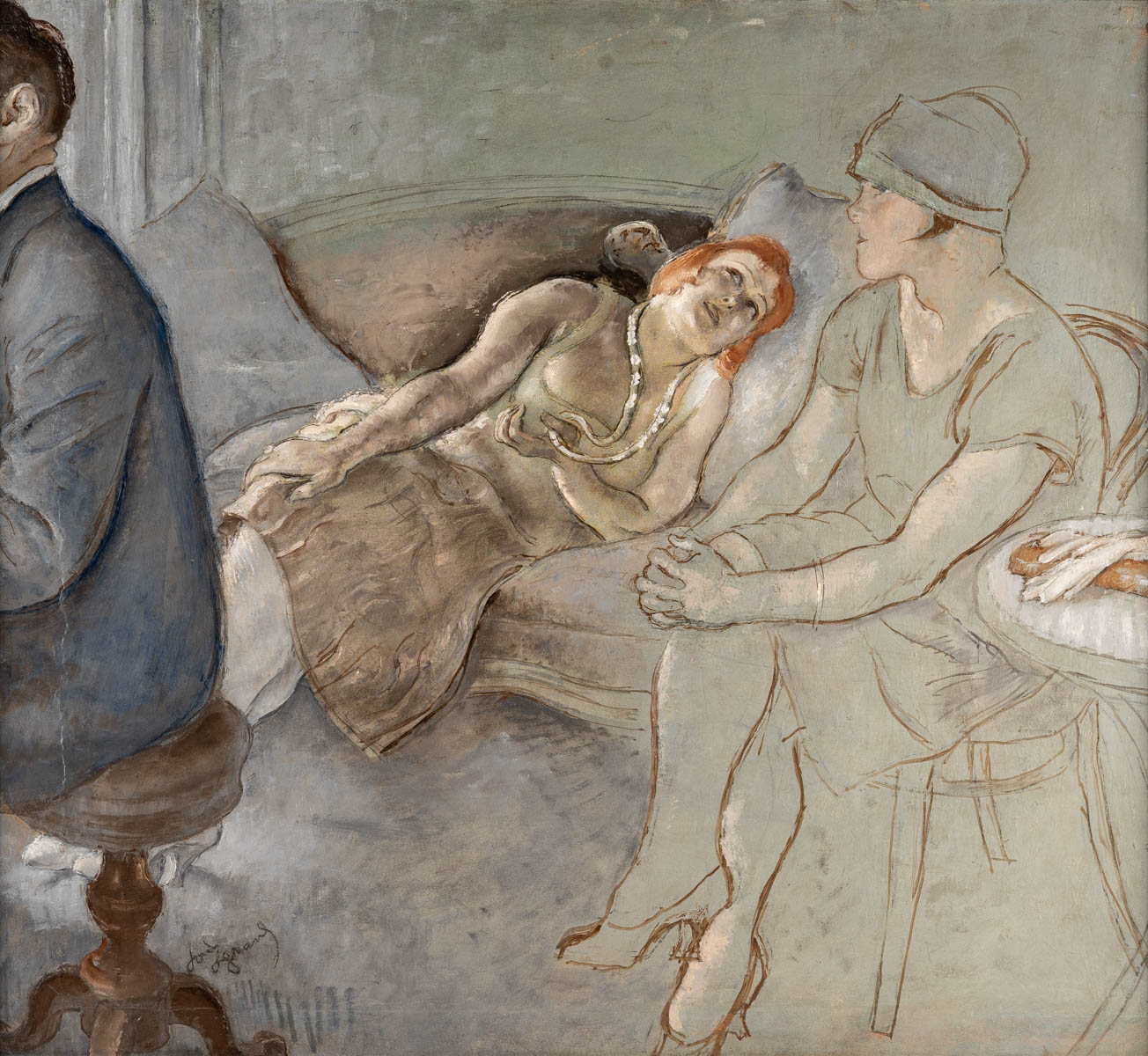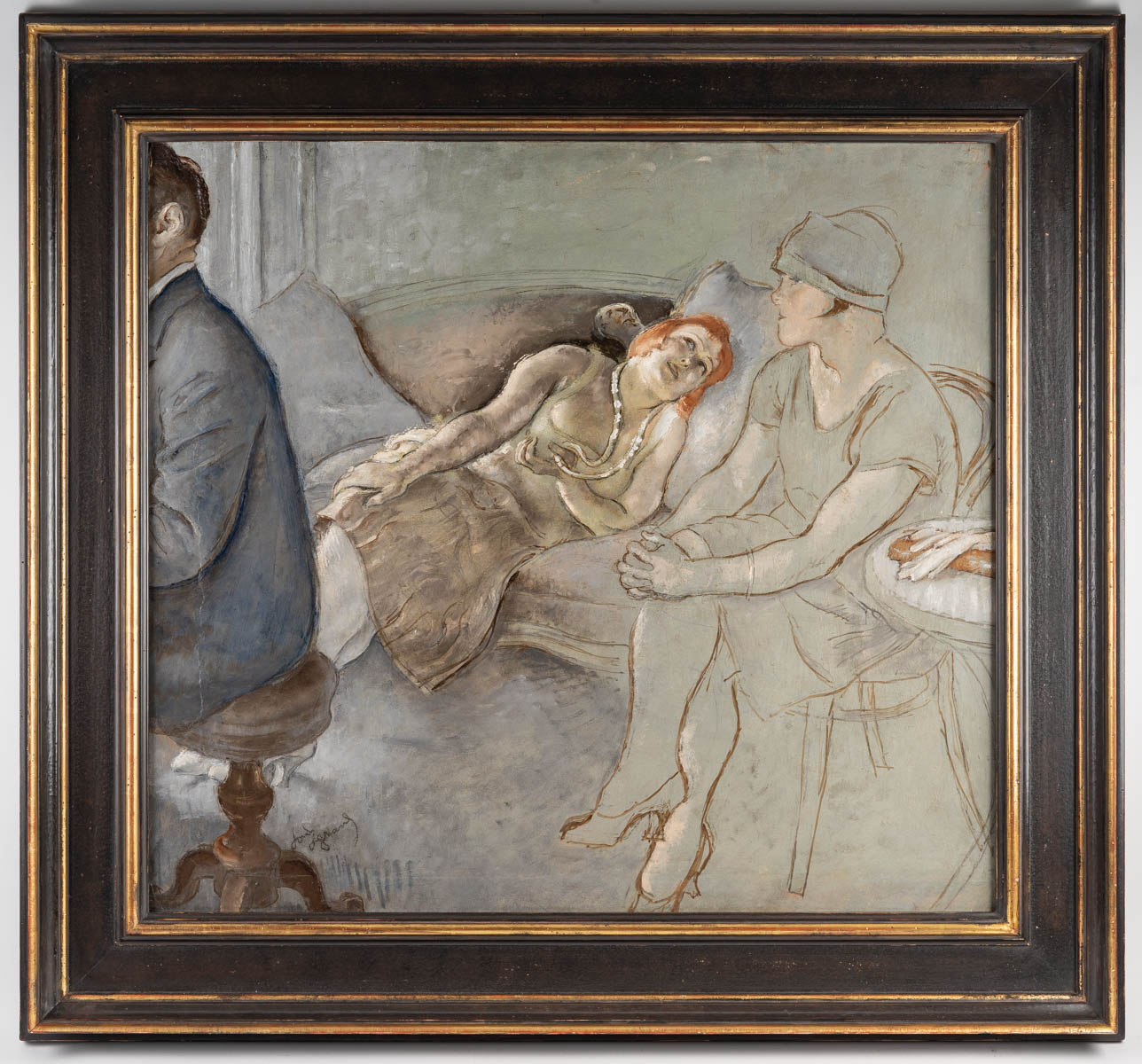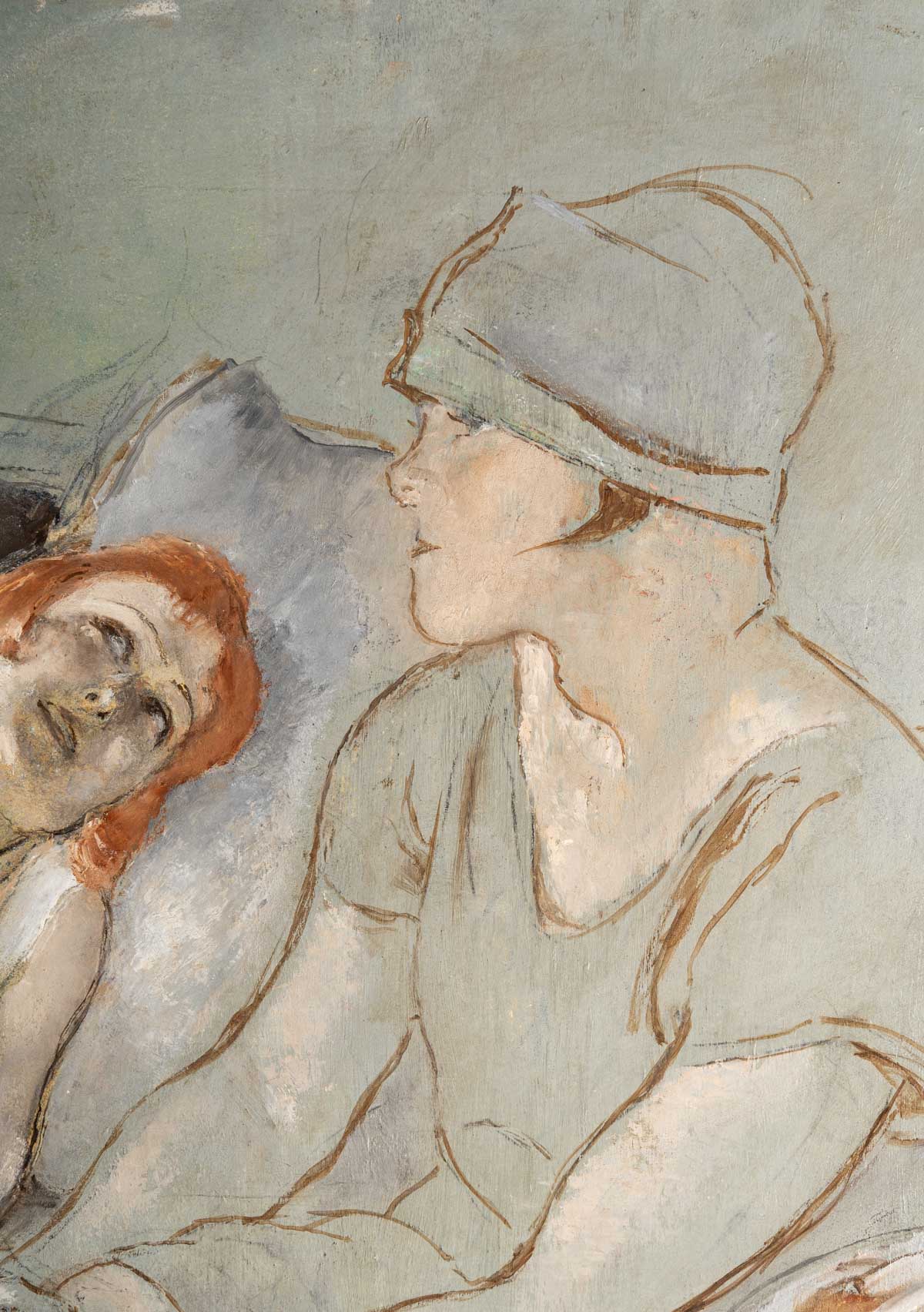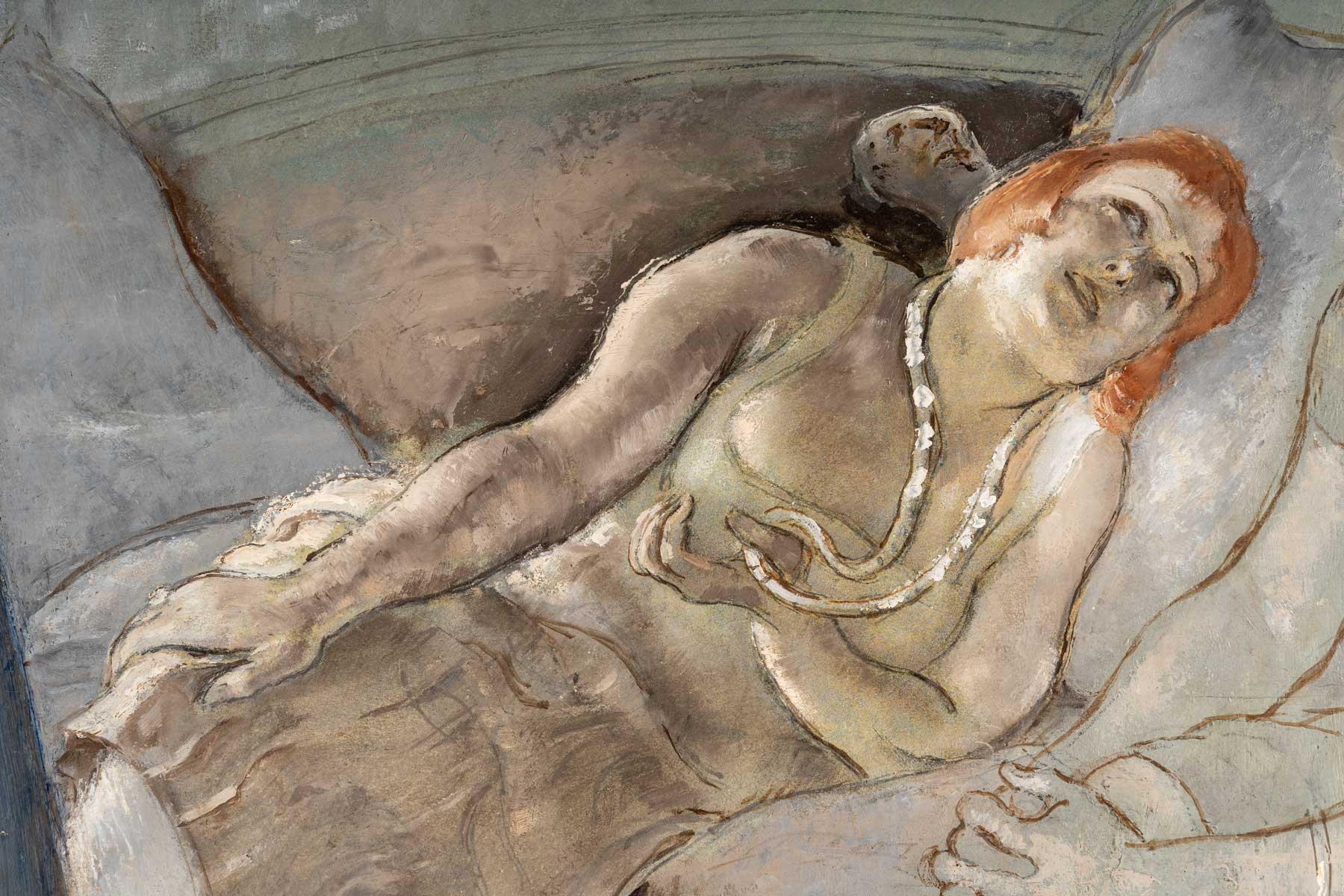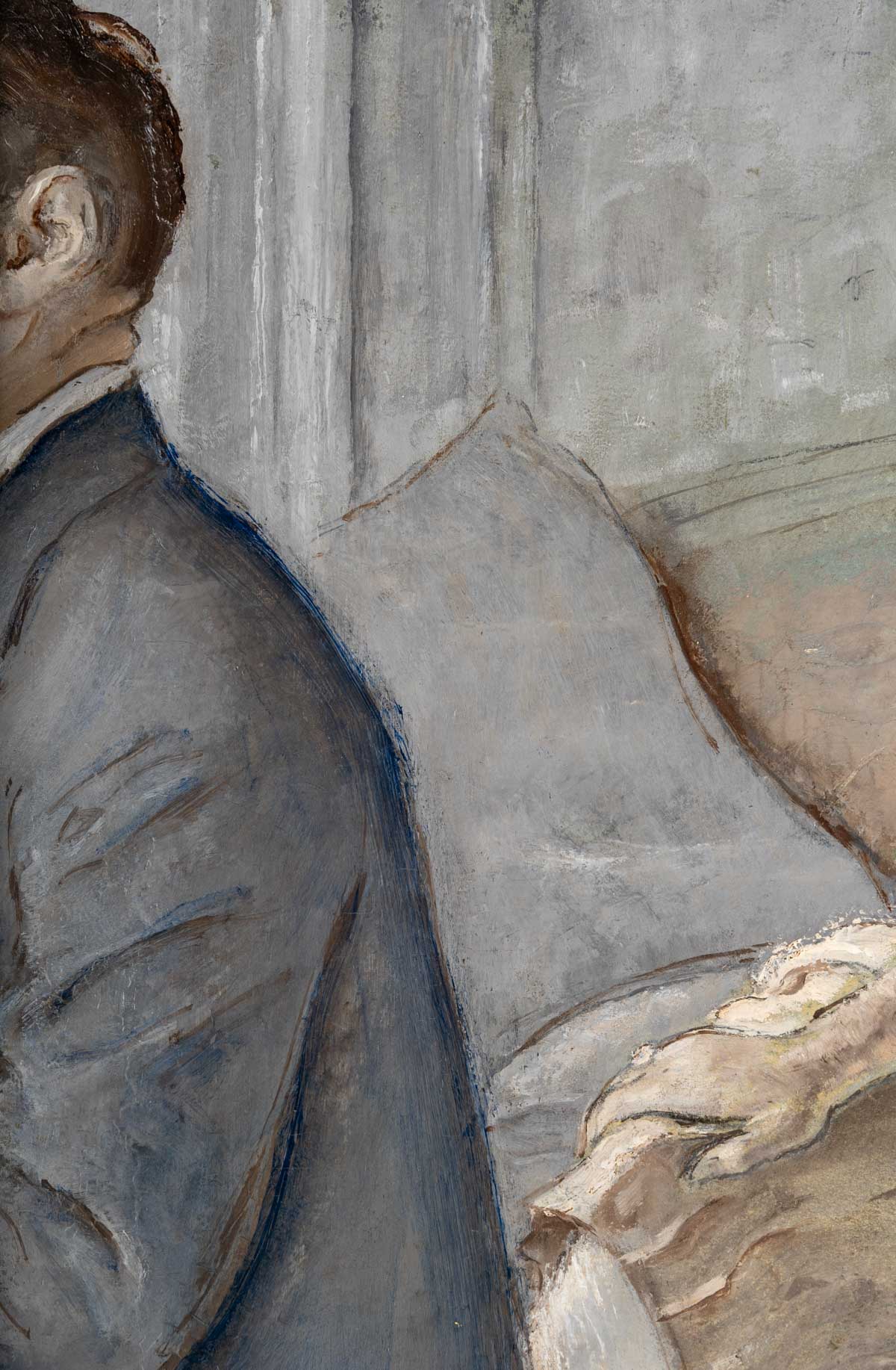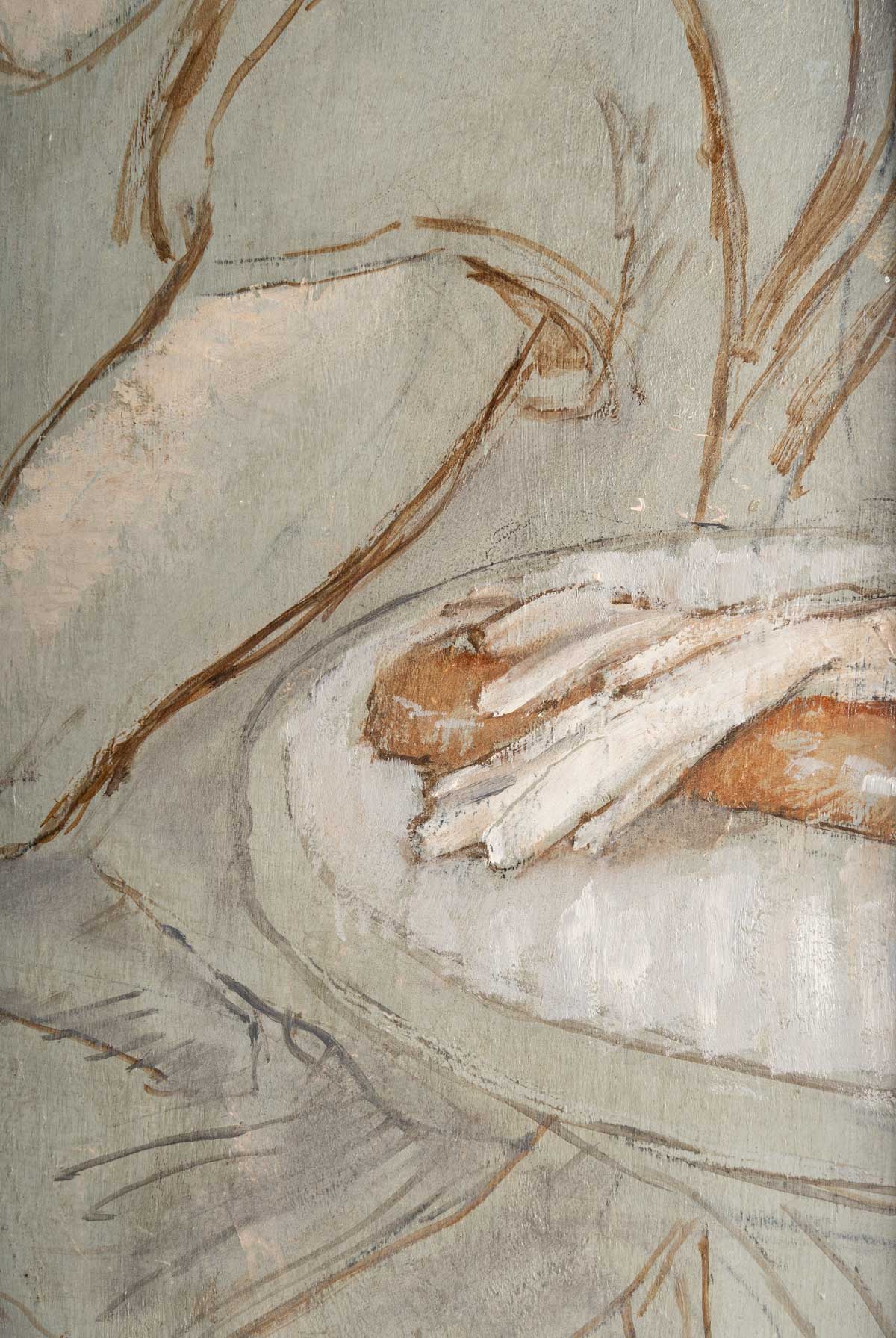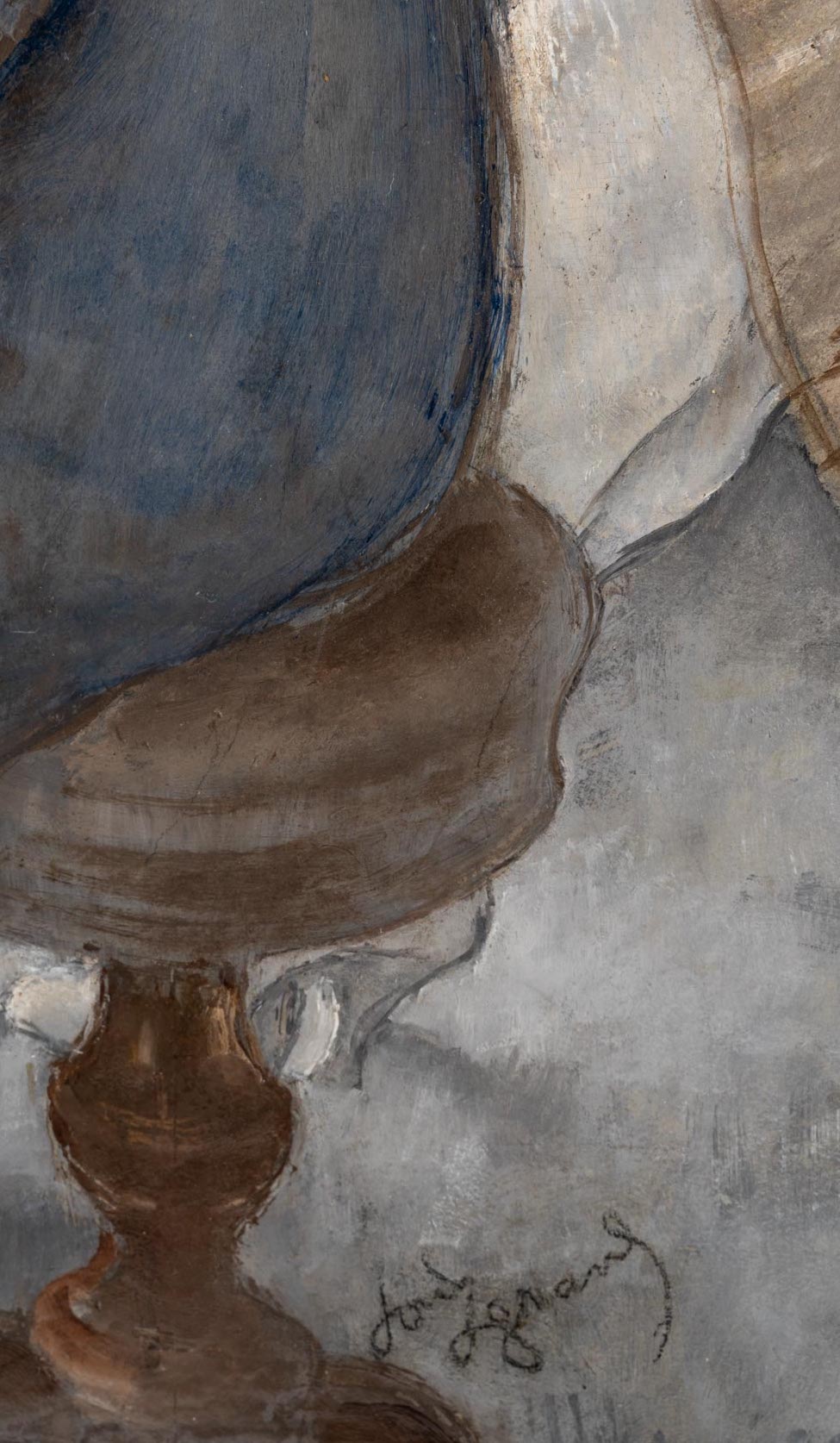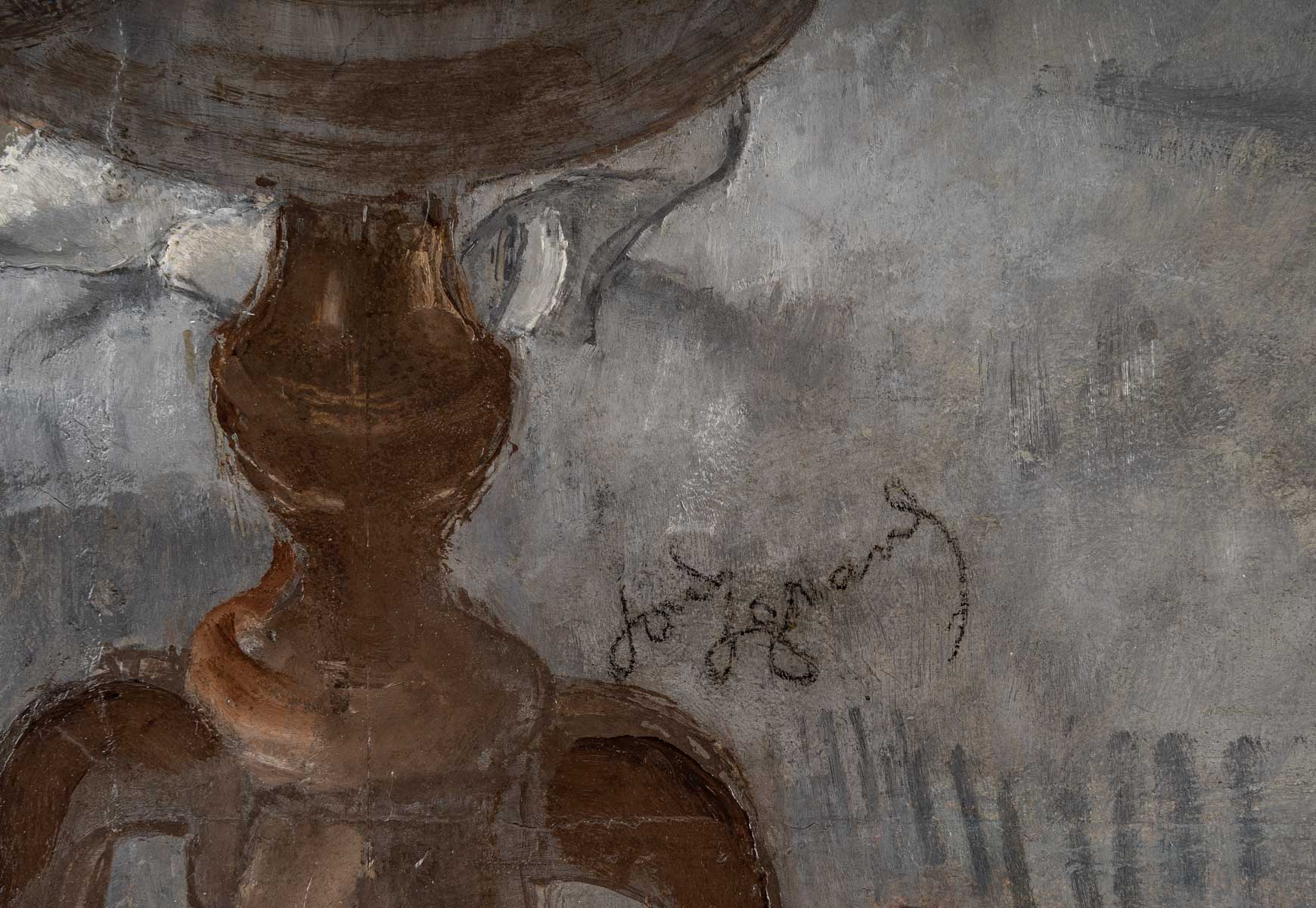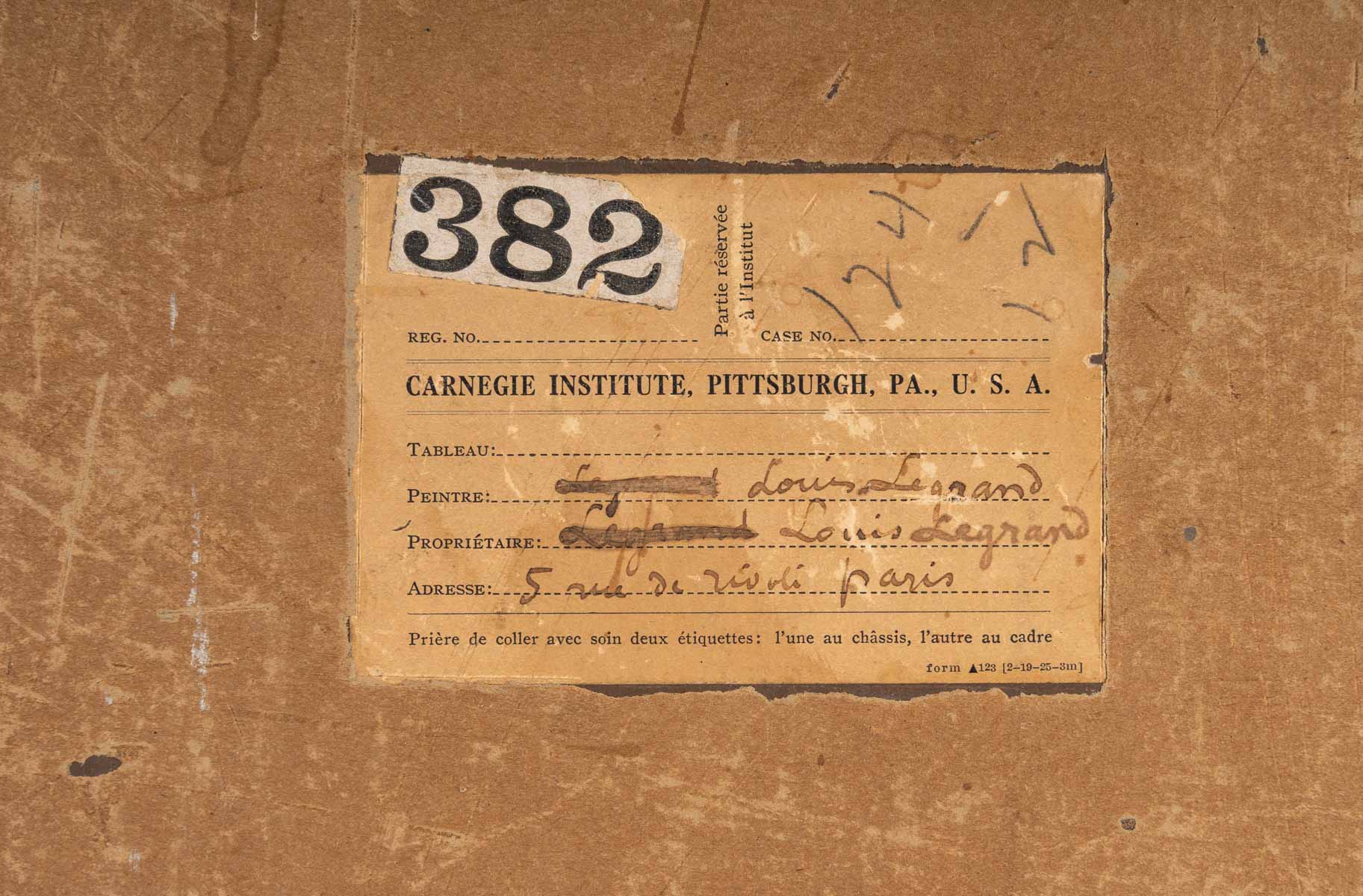Louis LEGRAND
The musical break
Oil on cardboard
Signed lower left
Dimensions: 73 x 76cm
With frame: 93 x 96 cm
On the back, the painting bears an exhibition label with the number 382: “Carnegie Institute, Pittsburgh Pennsylvania USA”.
Provenance : Sale of March 30, 1995 – Mrs Claude Boisgirard – Paris – “Collection of works by Louis Legrand from Mr and Mrs V”. The painting appears on the cover of the auction catalogue.
Price: €28,000
Louis Legrand depicts here two young women in an interior listening to the piano. The painter chose to represent the third character, the pianist, leaving only his back profile visible. The interior is sober; a sofa, a chair, a small table and the pianist’s revolving stool make up the decor.
The emphasis is on the characters and in particular on the young red-haired woman in the center of the composition. The light coming from the left illuminates her and draws the viewer’s gaze to her shimmering hair and her necklace with shiny pearls. Her friend on the right is drawn with a thick, vibrant line. Some very feminine details like the necklace, a ring, a bracelet, a small handbag, white gloves and the white shoes that appear under the seat of the pianist come to decorate the scene.
Louis Legrand gives us here a work of audacious composition, which is the prerogative of the great masters. Painted with sobriety and spontaneity, the artist suggests rather than describes; his line is both firm and vibrant.
He uses light and plays with colored parts and others drawn without color. Although an economy of means characterizes the painting, the scene is alive and the artist subtly takes us into the intimacy of this relaxing scene, offering us a moment suspended in time.
Louis Legrand was born in 1963 in Dijon. Painter, watercolourist, engraver and illustrator, he is a multifaceted artist. After training at the School of Fine Arts in Dijon, he went to Paris in 1884 and became the student of the brilliant and sulphurous Félicien Rops who introduced him to various techniques including engraving.
The teacher appreciates the aptitudes of his pupil. In a letter dated 1888 from Félicien Rops to Mr Roques, director of the weekly ” Le Courrier Français » he evokes « the precious and rare qualities, dominated by an extraordinary love of the model of Louis Legrand. » he also writes « You can imagine that the idea did not occur to me to teach something to this guy!. Legrand began without help, like ducklings going to the pond, to make beautiful drawings which attracted the attention of artists and amateurs.
From 1902, the artist participated in the Salons des Beaux Arts in Paris, at the Universal Exhibition of 1900 where he won a medal.
he also exhibited at the Samuel Bing gallery and then in 1904 at the Georges Petit gallery. He was decorated with the Legion of Honor in 1906.
In 1911, the Durand-Ruel gallery presented a major retrospective of his work.
Before Toulouse-Lautrec, he depicted the Parisian nightlife of the Belle Epoque, the lively cafés, the women, the cancan dancers. The Moulin Rouge ball in Paris has long been the artist’s studio.
The publisher and art collector Gustave Pellet publishes 300 engravings from him and buys all his pastels from him. He also engraves erotic subjects for him. He is the painter of “gay eroticism”.
It is present in many private collections.
Bibliography:
. Camille Mauclair, Louis Legrand, painter and engraver , Floury, Paris 1910
. Dictionary of illustrators-1800-1914 , Idé and Calande, Neufchatel, Paris 1989
. Bénézit, “Louis Legrand”, Oxford Art Online
Museums:
. In France: Dijon, the Magnin National Museum and the Museum of Fine Arts; Strasbourg, modern and contemporary art museum, Quimper, Fine Arts museum, .
. In Switzerland: Geneva, Petit Palais.
. In the USA: Cleveland, Museum of Art; San Francisco; Washington, Smithsonian American Museum

